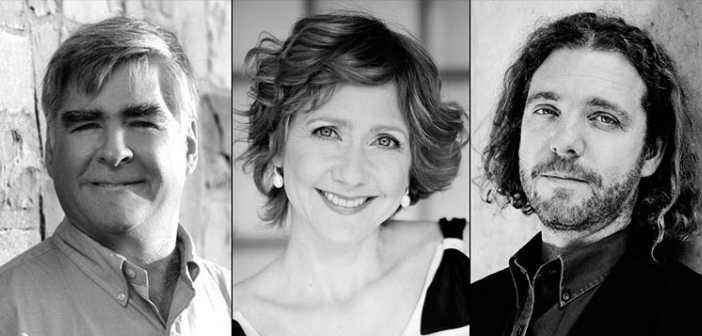Saturday at the Chapelle Notre-Dame-de-Bon-Secours long-time collaborators Daniel Taylor and Suzie LeBlanc lit up the night with a dazzling display of virtuosity in a selection of Handel’s greatest arias and duos. Joined by twelve members of the Orchestre symphonique de Longueuil under the baton of Marc David, Taylor and LeBlanc gave a reminder of the enduring allure of these works.
To open the evening, David led the OSDL in the Overture and Act III Sinfonia (“Arrival of the Queen of Sheba”) from Solomon. Playing on modern instruments with Dorothéa Ventura on harpsichord, the group had a lively sound and as an ensemble, the balance worked quite well with a single player on each string part. It took some time to settle into the dotted rhythms of the Overture, but the better-known “Arrival” immediately meshed.
It’s been over 15 years since the release of Taylor and LeBlanc’s album Handel Love Duets with Stephen Stubbs and the Arion Baroque Orchestra on ATMA, but the project has aged well. Adding more sacred themes in the 25 February concert, their execution was reverent and stage presence showed the comfort and trust built from the years spent refining their interpretations. From a technical standpoint, the final cadence of each duo was so finely crafted it was easy to forget that it was live and not recorded.
“Welcome as the dawn of day” was our introduction to Taylor and LeBlanc, who displayed formidable blend in the pastoral expression of love and devotion between Solomon and his Queen. Following with a selection of a similar character from another oratorio, “To thee, thou glorious son of worth” from the somewhat lesser-known Theodora. From their interpretation it is easy to see how it is often staged as an opera—both are capable of doing so much dramatically with so little text. But in the lower registers of the vocal lines, the orchestra had a habit of covering some of the subtleties, this could have been solved with more decay in the sustained strings.
Pulling the tie from his hair, Taylor embodied the fierce villain Tolomeo from Giulio Cesare which was followed by LeBlanc—excuse my colloquialism—totally rocking “Let the bright Seraphim” from Samson, with arresting call and response with Lise Bouchard on trumpet. Between an extended orchestral interlude of selections from Messiah, Water Music and Rinaldo that could have been halved with the same effect, Taylor and LeBlanc gave a humble rendition of “He Shall Feed” that had a little too much guesswork by David at the ends of phrases.
Rounding out the second half, we had “Scherzano sul tuo volto” and “Lascia ch’io pianga” (Rinaldo), “Ombra mai fu” (Serse), “Se il cor ti perde” (Tolomeo), and “Caro! Bella! Più amabile beltà” (Giulio Cesare) in quick succession. There’s something about the Italian language that makes the music more reverent, even though profane. Though fresh off a January 12 concert in Boucherville with the OSDL that featured many of the same works, Taylor and LeBlanc gave the sense of freshness that can only come from rigorous attention to detail.
The evening ended with Taylor appealing to the audience to find unity in this difficult time, emphasizing the theme of triumph over evil that features in so many of Handel’s sacred and secular works. A noble sentiment received well by the audience.
Montréal en Lumière runs until March 11. For a full list of shows and concerts, click here.














